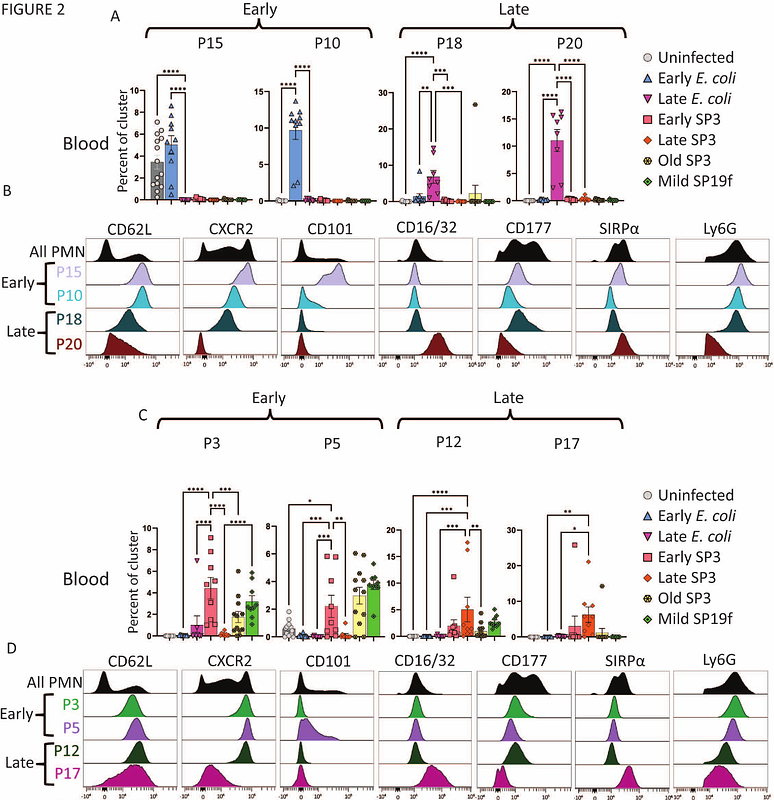Neutrophils respond with pathogen-specific defenses during bacterial pneumonia

Neutrophils respond with pathogen-specific defenses during bacterial pneumonia
Pihl, R.; Martins, K.; Lee, Y.; Patneaude, L.; Quinton, L.; Mizgerd, J.; Belkina, A.; Traber, K.
AbstractNeutrophils have historically been envisioned as a homogenous population of short-lived innate immune cells that migrate to sites of infection, kill pathogens, and die. Recent work, including studies in pneumonia models, has shown that neutrophil transcriptomes reflect the environment from which they were isolated. We used high-parameter spectral flow cytometry to compare and contrast a wide array of surface proteins on neutrophils from different tissues, infections, host age, pathogen virulence, and across multiple time-points of pneumonia. Circulating and airspace neutrophils consistently differed, and surface protein phenotypes unique to each infection setting were identified, revealing tissue-specific and microbe-specific neutrophil plasticity. Phenotypic differences in circulating neutrophils from mice infected with different pathogens (E. coli, S. pneumoniae, S. aureus, and P. aeruginosa) identified, even in the absence of bacteremia. Neutrophil activation state was diminished with less virulent pathogens and host age. In the airspace, VISTA, CD200R, and PD-L1 were selectively high on BAL neutrophils (BALN) during S. pneumoniae infection, and we identified pro-degranulation-like (CD88High VISTAHigh PD-L1+ CD101- ) neutrophils in S. pneumoniae and pro-phagocytosis-like (CD101+ CD18Low PD-L1-) neutrophils in E. coli infections. Stimulation of VISTA with its ligand VISG-3 enhanced the neutrophil respiratory burst, degranulation, and killing of S. pneumoniae but not E. coli. We conclude that neutrophil cell surface protein expression depends on anatomic location and infection type, resulting in pathogen-specific neutrophil-mediated immune defense in discreet areas of the pneumonic lung.